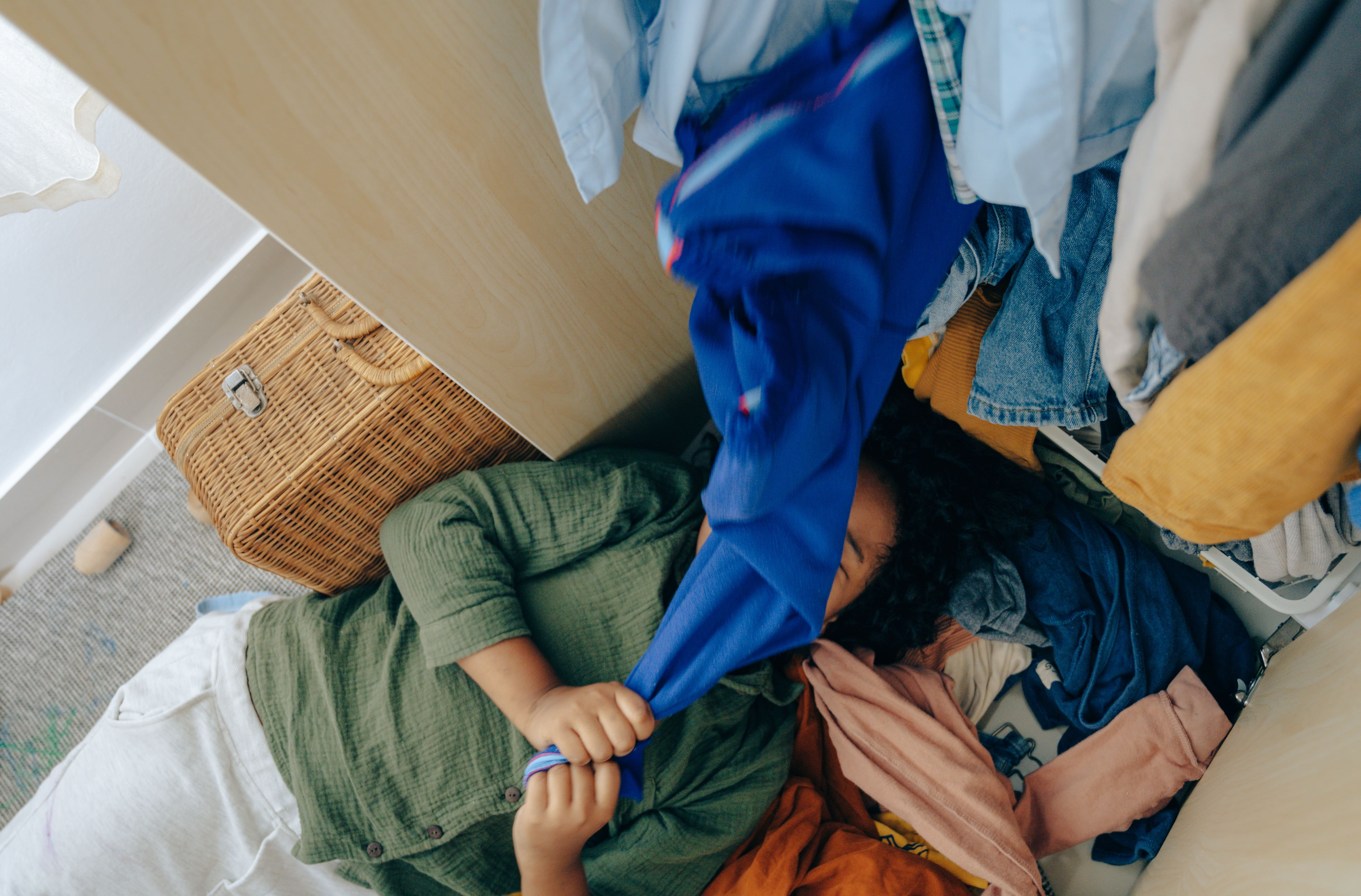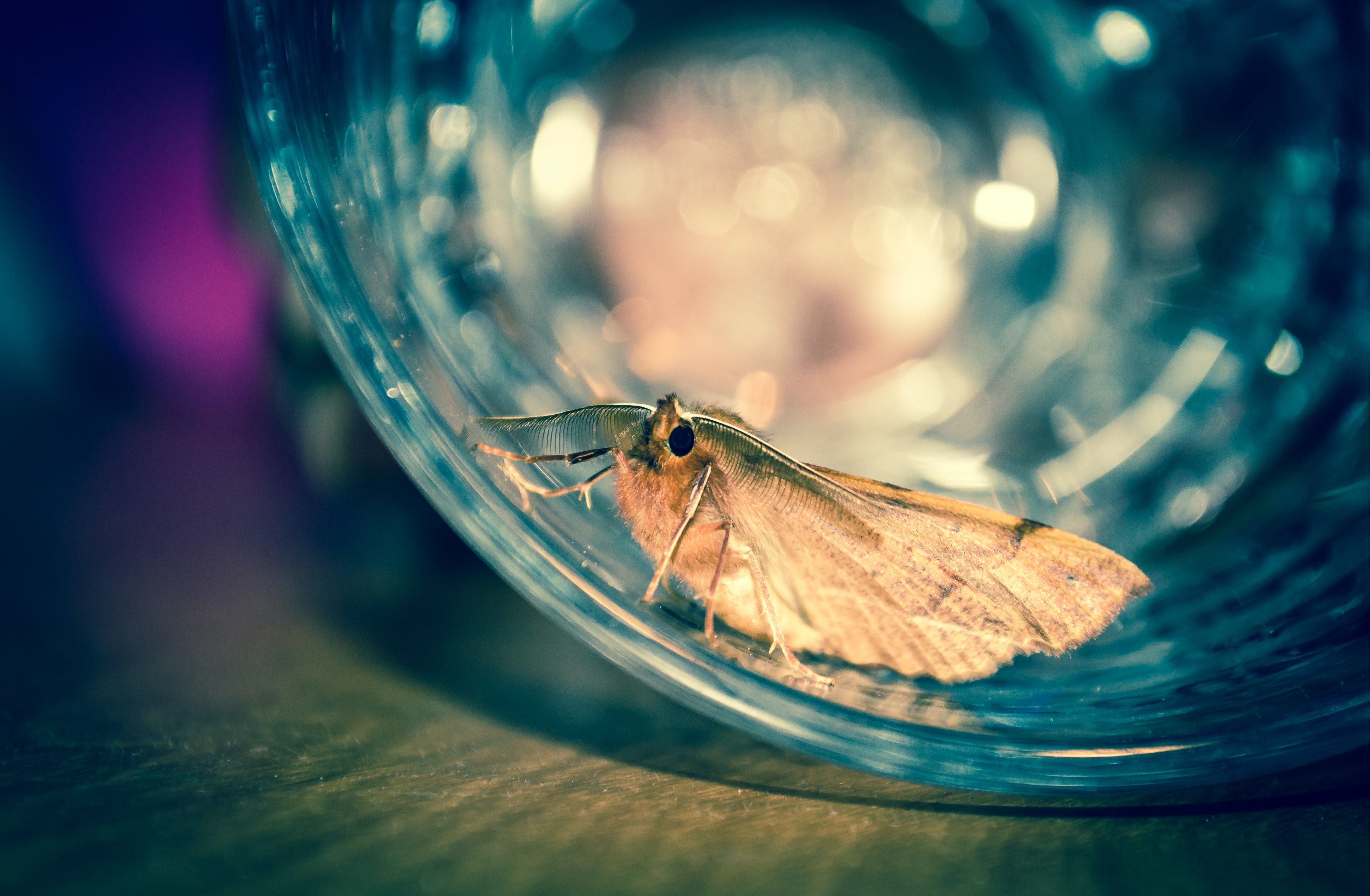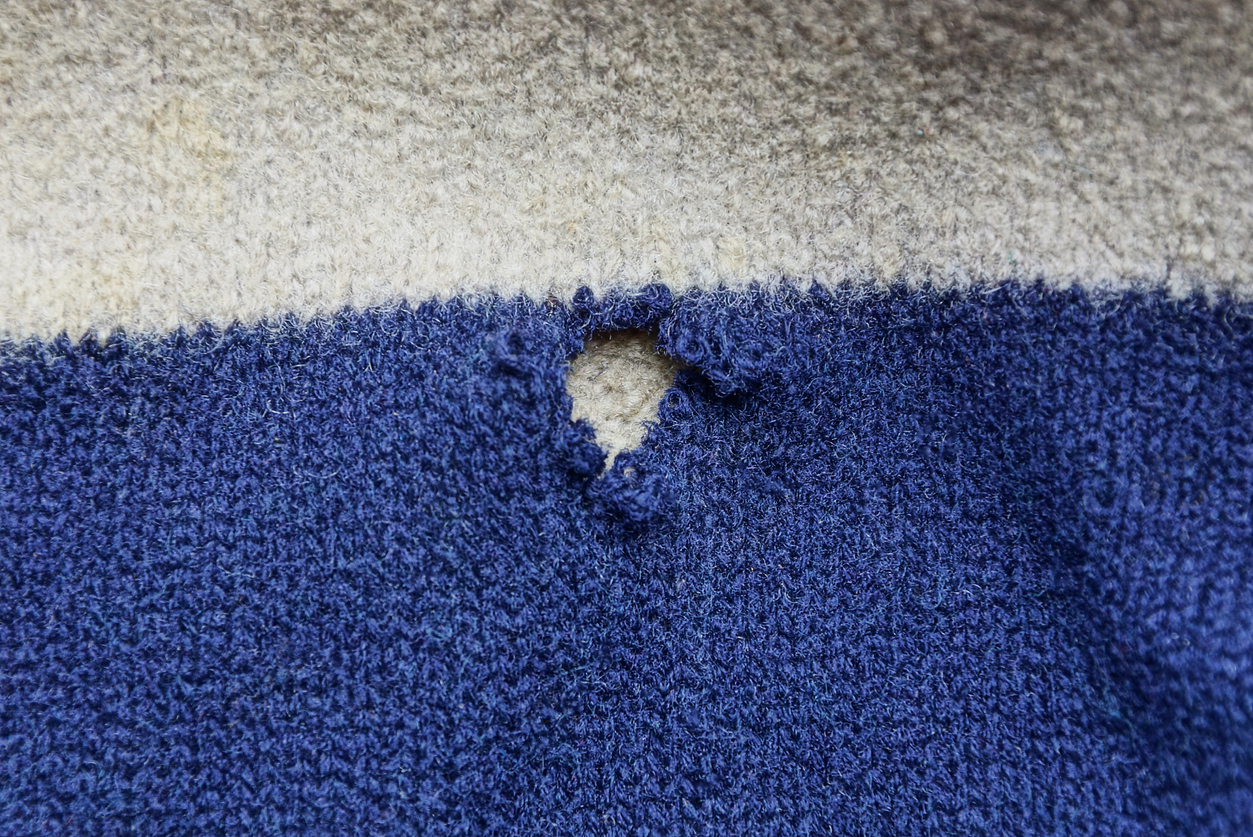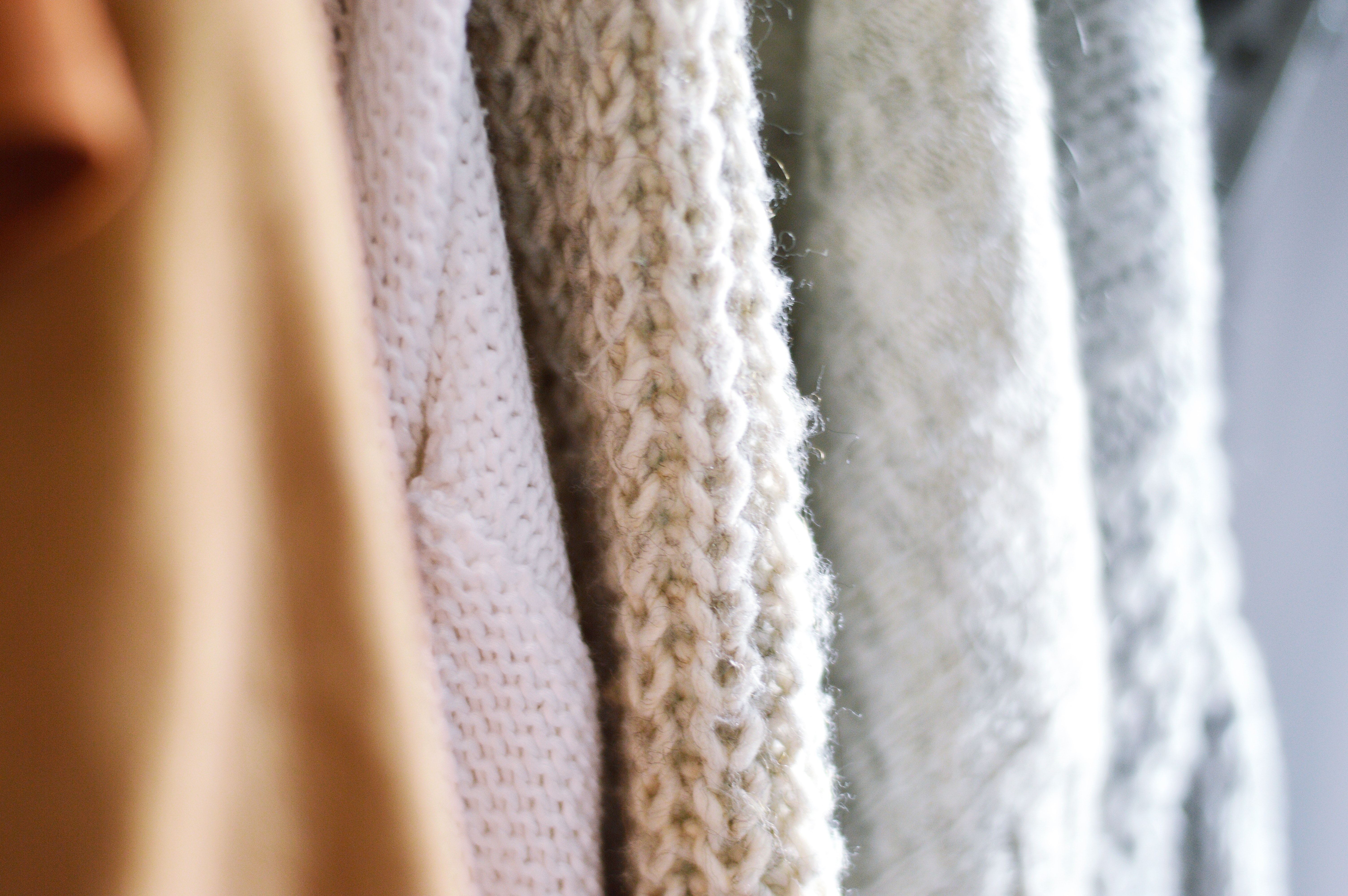What is a moth?
Clothes moths:
Clothes moths are pests that can cause significant damage to clothing, fabrics and carpets. Although they are not dangerous to human health, they can cause significant economic problems by damaging clothing and fabrics.
There are two types of clothes moths: frank-mouthed moths and trumpet-mouthed moths. Frank-mouthed moths, also called closet moths, are the most common and feed primarily on animal fibers such as wool, silk, and fur. Trumpet-mouthed moths, on the other hand, feed on plant fibers such as cotton, linen, and carpet.
Be careful because Mites or moths come from outside and live in trees and bushes. They are attracted by the light and the good smell of your apartment. Moths and butterflies do not eat, their job is to mate, lay eggs and die. Their larvae can cause damage. Your clothes have holes in them, so moths lay eggs in your closet, and their eggs lay devastating larvae.
Importance of prevention to protect your clothes
Prevention is key to protecting your clothes from clothes moths. These pests can cause significant damage to your clothing and accessories in a short period of time. A moth infestation can quickly spread throughout your wardrobe and destroy your favorite clothes, causing significant financial losses.
By implementing preventative measures, you can significantly reduce the risk of moth infestation. It is important to understand the conditions that moths thrive in, such as humidity and heat, and avoid them whenever possible. It is also important to store your clothes in airtight containers and clean them regularly to eliminate moths and their eggs.
Using natural repellents, such as herbal sachets or pheromone traps, can also reduce the risk of moth infestation. It is also important to regularly check your clothes for signs of infestation and treat any infestations promptly.
What attracts moths?
The different species of moths:
Clothes moths are insects that can cause considerable damage to your clothing and accessories. There are two main species of moths responsible for infestations in homes: the clothes moth (Tineola bisselliella) and the floor moth (Anthrenus verbasci).
The clothes moth is the most common species in home infestations. It is small, about 2 to 3 mm long, and has a brown or gray color. The eggs of the clothes moth are white and transparent and measure about 0.5 mm in diameter. The larvae of this moth are white in color and measure about 5 mm long.
The floor moth is a larger species, measuring about 6 to 7 mm in length, and is brown in color. The floor moth eggs are also white and transparent and measure about 0.5 mm in diameter. The floor moth larvae are white in color and measure about 7 mm in length.
It is important to recognize the different species of moths in order to identify and eliminate them effectively.
The conditions conducive to their proliferation
Clothes moths need certain conditions to reproduce and proliferate. The main conditions conducive to their proliferation are humidity and heat.
Moisture is essential for moth survival. They need high relative humidity to hatch and thrive. Living areas that tend to be more humid, such as bathrooms and kitchens, are more likely to harbor moth infestations.
Heat is also important for moth infestation. High temperatures promote the growth and reproduction of moths. Cabinets and drawers that are exposed to heat, such as those near a heat source or radiator, are at greater risk for moth infestation.
In summary, to protect your clothes from clothes moths, it is important to understand the different species of moths and the conditions conducive to their proliferation.
How to recognize a clothes moth infestation?
Signs of their presence in your closet
It is important to know how to recognize a clothes moth infestation so that you can treat it quickly. Here are some signs that indicate the presence of moths in your wardrobe:
- Holes or tears in your clothes or accessories: Moths eat the fibers of clothing, which can cause holes or tears.
- Moth droppings: Moths leave dust-like droppings that may be visible on your clothes or on your closet shelves.
- Cobwebs: Moths produce cobwebs that may be visible on your clothes or on the shelves of your closet.
- Cocoons: Moths lay eggs that hatch into larvae, which then turn into cocoons. You may find moth cocoons in the corners of your closet or on shelves.
- Flying Moths: If you notice flying moths in your closet or room, it may be a sign of a moth infestation.
Inspection methods to detect an infestation
There are several inspection methods to detect a clothes moth infestation:
- Visual Inspection: Carefully examine your clothing and accessories for signs of moths, such as holes, droppings, cobwebs and cocoons.
- Flashlight Inspection: Use a flashlight to shine light into dark areas of your closet, such as corners and shelves, to look for signs of moths.
- Inspection using a pheromone trap: Use pheromone traps to attract moths and capture them. Pheromone traps can be purchased online or at gardening stores.
- Inspection with a motion detector: Use a motion detector to detect the movement of moths in your closet. These detectors can be purchased online or at gardening stores.
Prevention methods
Steps to take to prevent the appearance of clothes moths
It is important to put in place preventive measures to prevent the appearance of clothes moths:
Keep your home clean and tidy : Moths need a suitable environment to breed, so cleaning your home regularly and storing your clothes carefully will reduce the risk of infestation.
Store your clothes in airtight containers : Moths need air to survive, so storing your clothes in airtight containers will reduce the risk of infestation.
Use natural repellents : There are herbs and spices that have natural moth repellent properties, such as lavender, cedar, cinnamon, and eucalyptus. You can place sachets of aromatic herbs in your closets to protect your clothes from moths.
Avoid conditions conducive to their proliferation : Moths need humidity and heat to reproduce, by regulating the humidity and temperature of your home, you will reduce the risks of infestation.
Products and treatments to combat moths
There are products and treatments that can be used to control clothes moths.
Pheromone traps : Pheromone traps attract and capture moths, they can be used to detect an infestation and to reduce moth numbers.
Chemical Repellents : There are chemical repellents that can be used to control moths, such as insecticide sprays and sticky traps. However, it is important to follow the manufacturer's instructions and take necessary precautions when using these products.
Electronic traps : Electronic traps use pheromones to attract moths and kill them with an electric shock.
Professional Treatment : If you have a large infestation or are unable to eliminate the moths yourself, it is best to contact a professional for treatment.
How to Get Rid of Clothes Moths
Steps to Get Rid of Moths in Your Wardrobe
It is important to follow the proper steps to effectively eliminate moths from your wardrobe:
- Identify affected areas: It is important to identify areas affected by moths, such as cabinets, drawers, shelves, etc.
- Empty your closet: Remove all clothes, accessories, fabrics and items from your closet for a thorough cleaning.
- Clean affected areas: Clean affected areas thoroughly with a damp cloth to remove droppings, spider webs, eggs and cocoons.
- Use pheromone traps: To capture adult moths, use pheromone traps in affected areas.
- Use an insecticide treatment: Apply an insecticide treatment to kill moths and their eggs. It is important to follow the manufacturer's instructions and take necessary precautions when using these products.
- Wash or clean all items removed from the wardrobe: Wash or clean all items removed from the wardrobe (clothing, accessories, etc.)
- Store items carefully: Once items have been washed or cleaned, store them in airtight containers or zippered storage bags to prevent re-infestation.
Cleaning methods to prevent re-infestation
Continue to use pheromone traps : Continue to use pheromone traps to capture adult moths and monitor for signs of re-infestation.
Maintain proper temperature and humidity : Maintain proper temperature and humidity in your home to prevent moths from breeding.
Continue to clean regularly : Continue to clean your closet and other storage areas regularly to remove droppings, cobwebs, eggs and cocoons.
Consider regular treatments : Consider regular treatments to prevent re-infestation, this may include professional treatments or sprays.
In summary, eliminating clothes moths requires prompt identification of affected areas, thorough cleaning, and regular monitoring to prevent re-infestation. It is important to follow the proper steps, use the proper products, and maintain the proper conditions to effectively protect your clothes from moths.
How to Maintain Proper Temperature and Humidity
Use a hygrometer : Use a hygrometer to measure the humidity level of the air in your home. An ideal humidity level is between 30 and 50%.
Use a dehumidifier : Use a dehumidifier to reduce humidity in your home. Dehumidifiers remove excess moisture from the air using a refrigerant filter or condensation system.
Use clay bags : Use clay bags to absorb moisture in your closets and drawers. Clay bags are natural and can be regenerated by putting them in the sun for a few hours.
Ventilate regularly : Ventilate your rooms regularly to renew the air and avoid the accumulation of humidity.
Avoid sources of moisture : Avoid sources of moisture such as water leaks, prolonged baths or showers, unfinished laundry or dishes, and sweaty houseplants.
The recap
Importance of Protecting Your Clothes from Clothes Moths
In summary, protecting your clothes from clothes moths is important to preserve your clothes, avoid additional costs, preserve your health and avoid proliferation. It is therefore important to put in place preventive measures to protect your clothes and quickly detect an infestation to eliminate moths effectively.
- Identify affected areas: It is important to identify areas affected by moths, such as cabinets, drawers, shelves, etc.
- Empty your closet: Remove all clothes, accessories, fabrics and items from your closet for a thorough cleaning.
- Clean affected areas: Clean affected areas thoroughly with a damp cloth to remove droppings, spider webs, eggs and cocoons.
- Use pheromone traps: To capture adult moths, use pheromone traps in affected areas.
- Use an insecticide treatment: Apply an insecticide treatment to kill moths and their eggs. It is important to follow the manufacturer's instructions and take necessary precautions when using these products.
- Wash or clean all items removed from the closet: Wash or clean all items removed from the closet, including clothing, accessories, and fabrics.
- Store items carefully: Once items have been washed or cleaned, store them in airtight containers or zippered storage bags to prevent re-infestation.
- Maintain proper humidity levels: Use tools to measure humidity, use methods to reduce humidity, and avoid sources of moisture to maintain proper humidity levels.



















